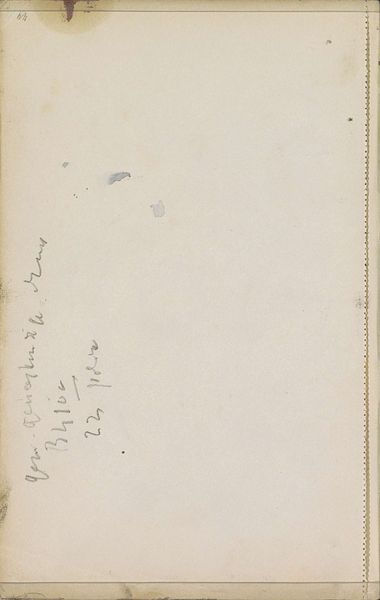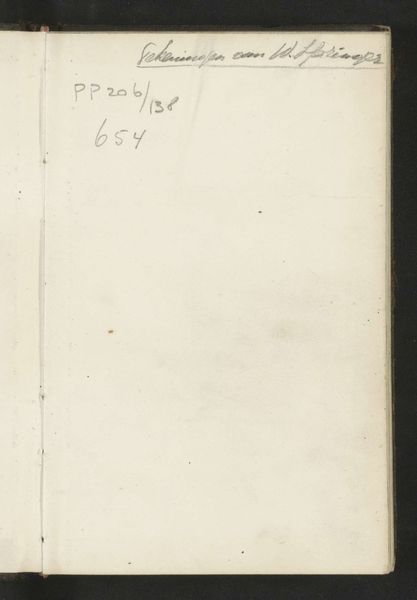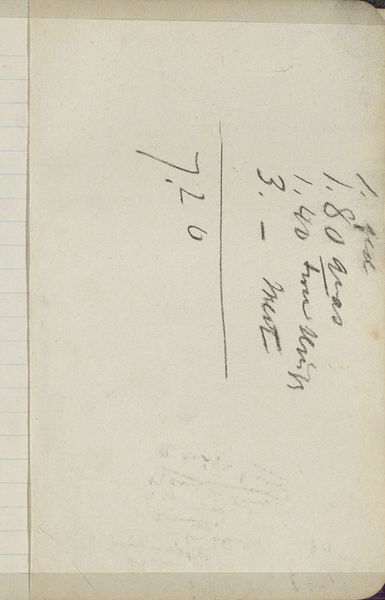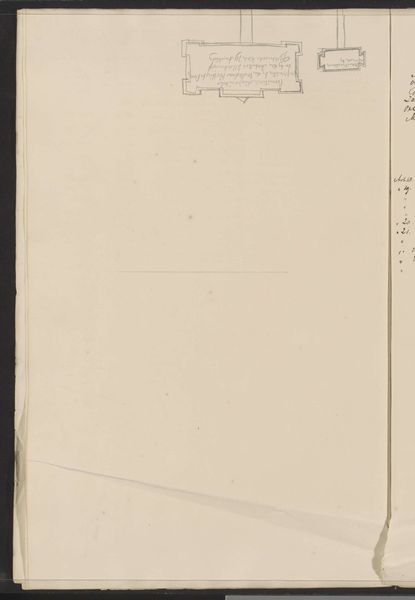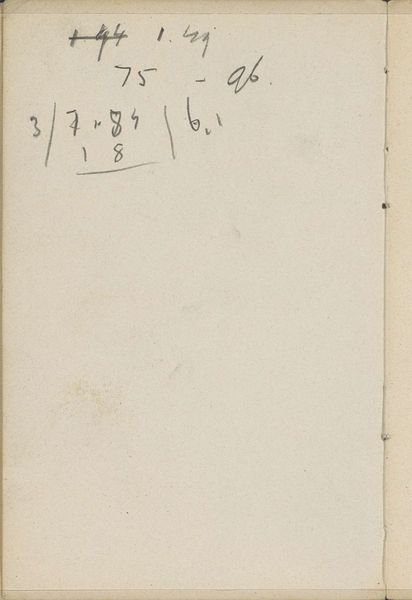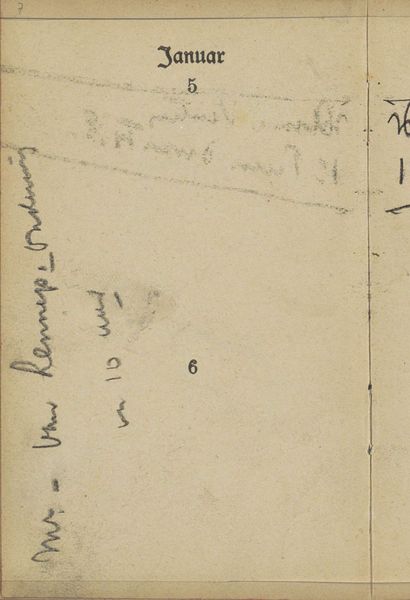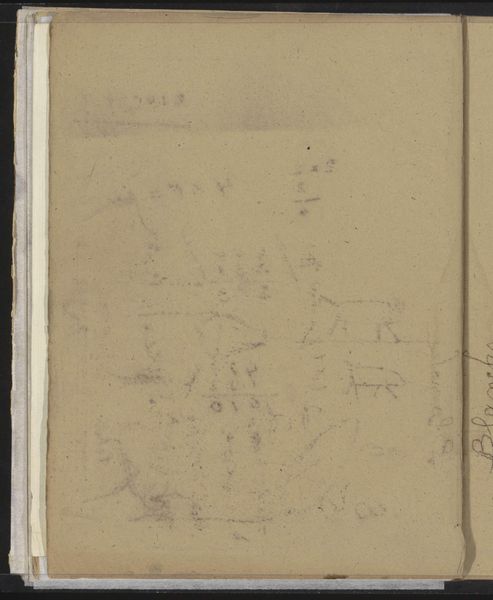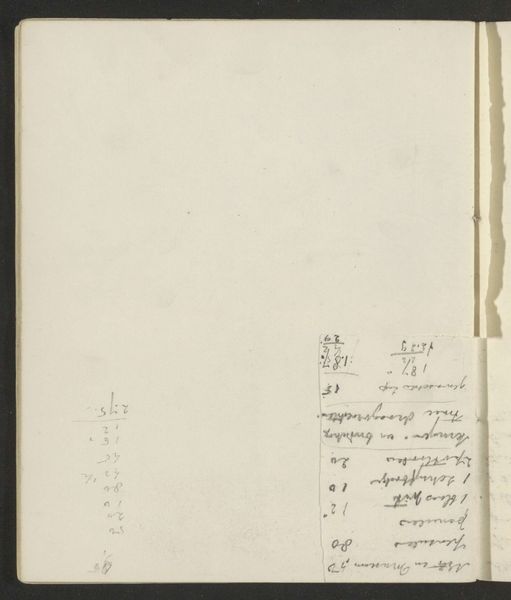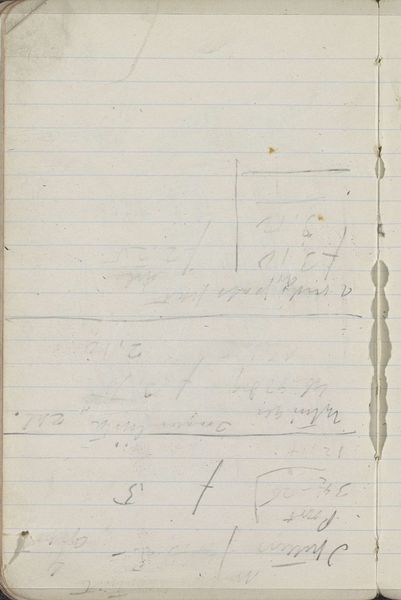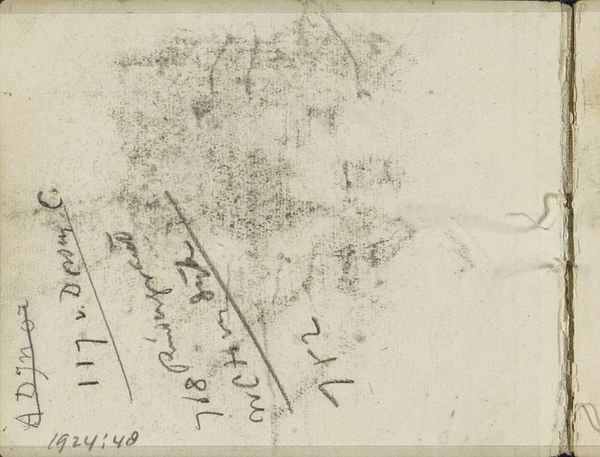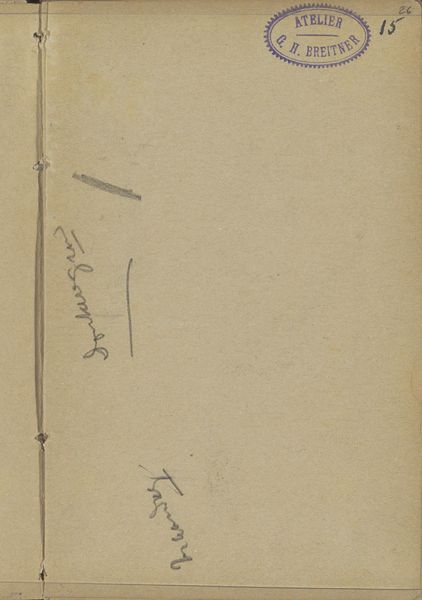
drawing, paper, ink, graphite, pen
#
drawing
#
paper
#
ink
#
geometric
#
line
#
graphite
#
pen
#
academic-art
#
modernism
Copyright: Rijks Museum: Open Domain
Editor: Here we have "Annotatie," a sketchbook page by Isaac Israels, likely created between 1886 and 1903, using graphite, pen, and ink on paper. It feels almost like we are looking at his thought process itself. What jumps out to you when you examine this page? Curator: Immediately, I'm drawn to the materials: the graphite, the pen and ink, and the very paper itself. This isn't just a carrier for ideas; it's an active participant in the creative process. Israels, in choosing these readily available, almost mundane materials, democratizes art making, stripping away the preciousness often associated with "high art". He’s emphasizing the act of creation, the labor of inscription. Do you think the disposability of the sketchbook impacts our understanding? Editor: I hadn't considered that angle. It makes me wonder, were these sketches intended for something larger, or are they valuable on their own, as raw, unedited expressions? Curator: Precisely! It challenges our very definition of art. Was it meant to be commodified, sold, displayed? Or was it a private exercise, a form of labor solely for the artist’s own development? What's more, consider the production of these materials. Where did the paper come from? Who manufactured the ink and graphite? We must consider artmaking as embedded within a broader network of industrial production and distribution. The mass-produced aspect invites us to think about the consumption habits during Israels’s time. Editor: I see what you mean. Thinking about the labor involved in creating even these basic materials gives me a new appreciation for the work itself. It also raises questions about access to art materials then, and even now. Curator: Indeed! Looking at art through the lens of its material origins and means of production opens up new avenues for understanding both the art and its social context. It shifts the focus from solely the aesthetic to a more grounded understanding of its making. Editor: This has been really enlightening! It's incredible how much meaning can be unearthed by considering something as basic as the materials.
Comments
No comments
Be the first to comment and join the conversation on the ultimate creative platform.
